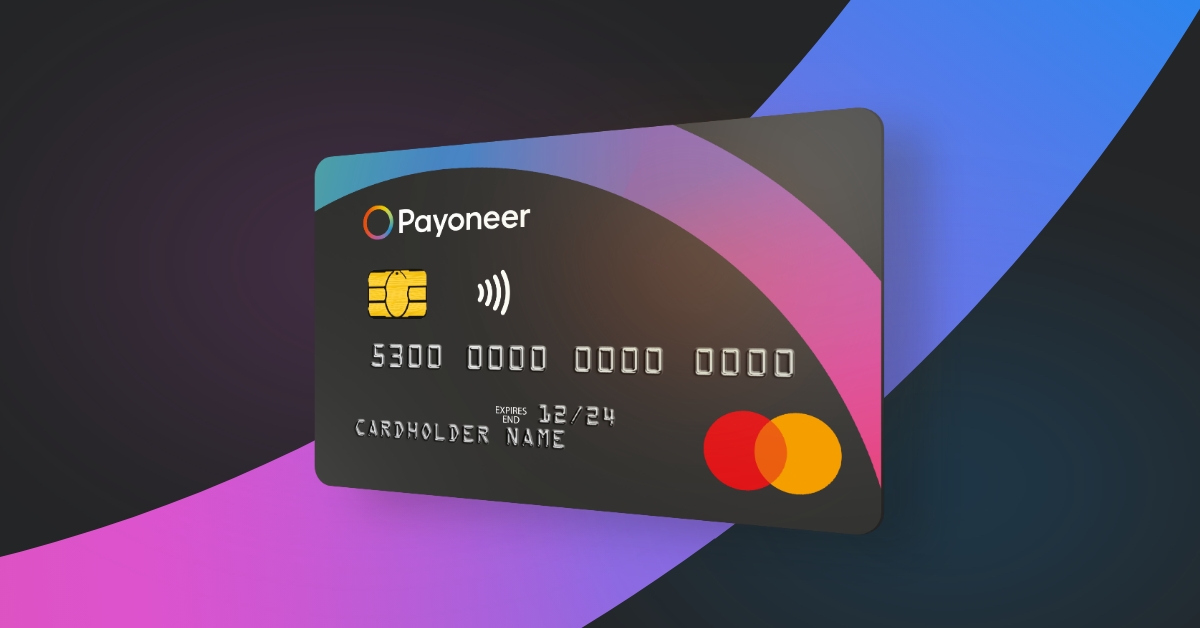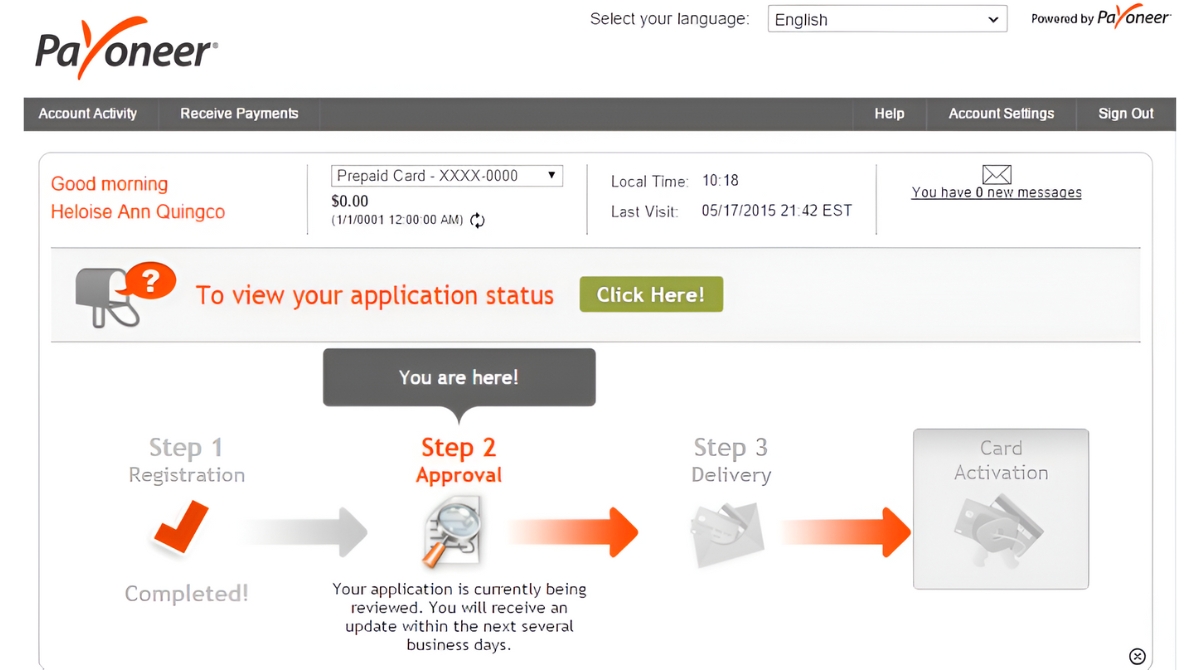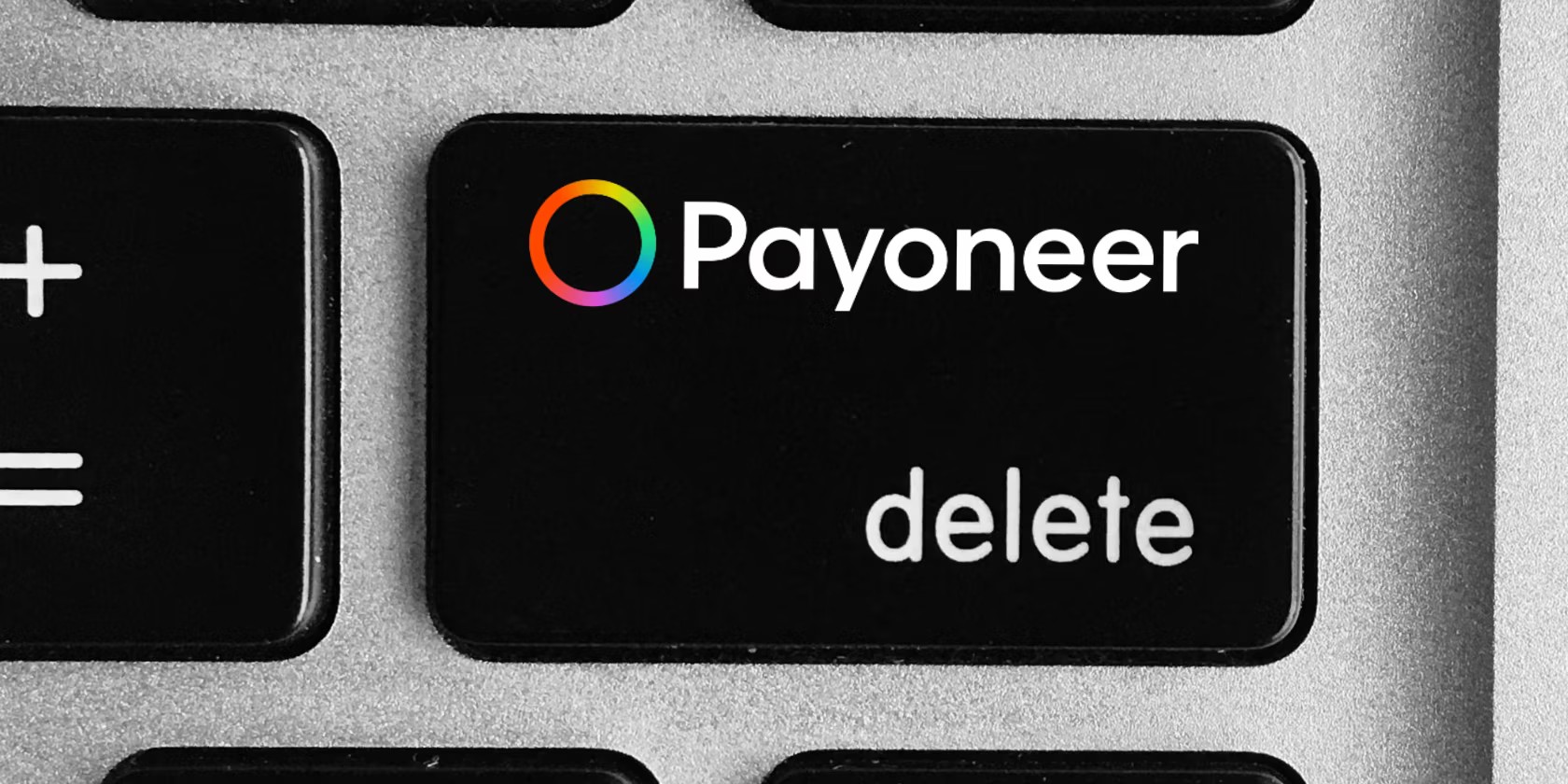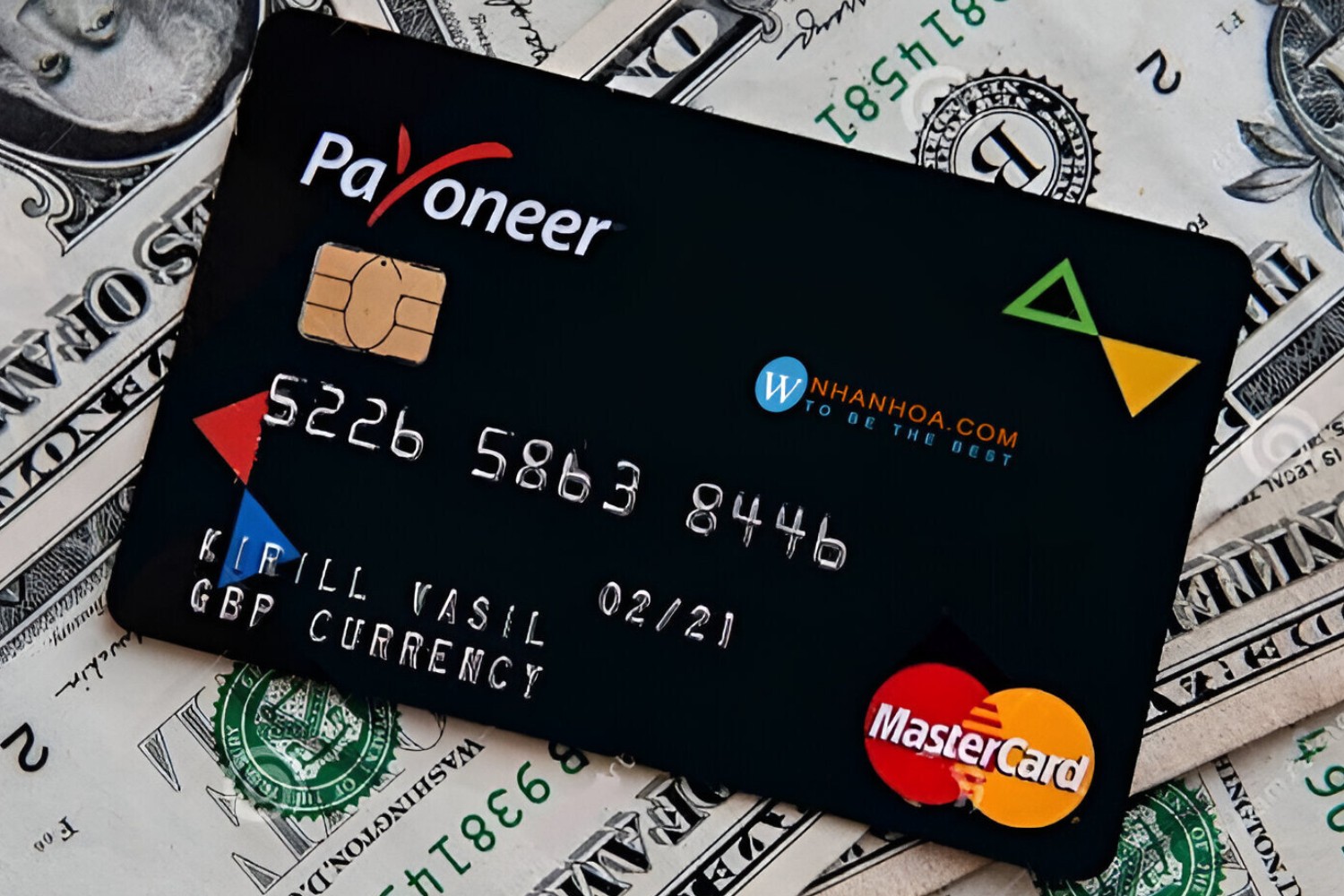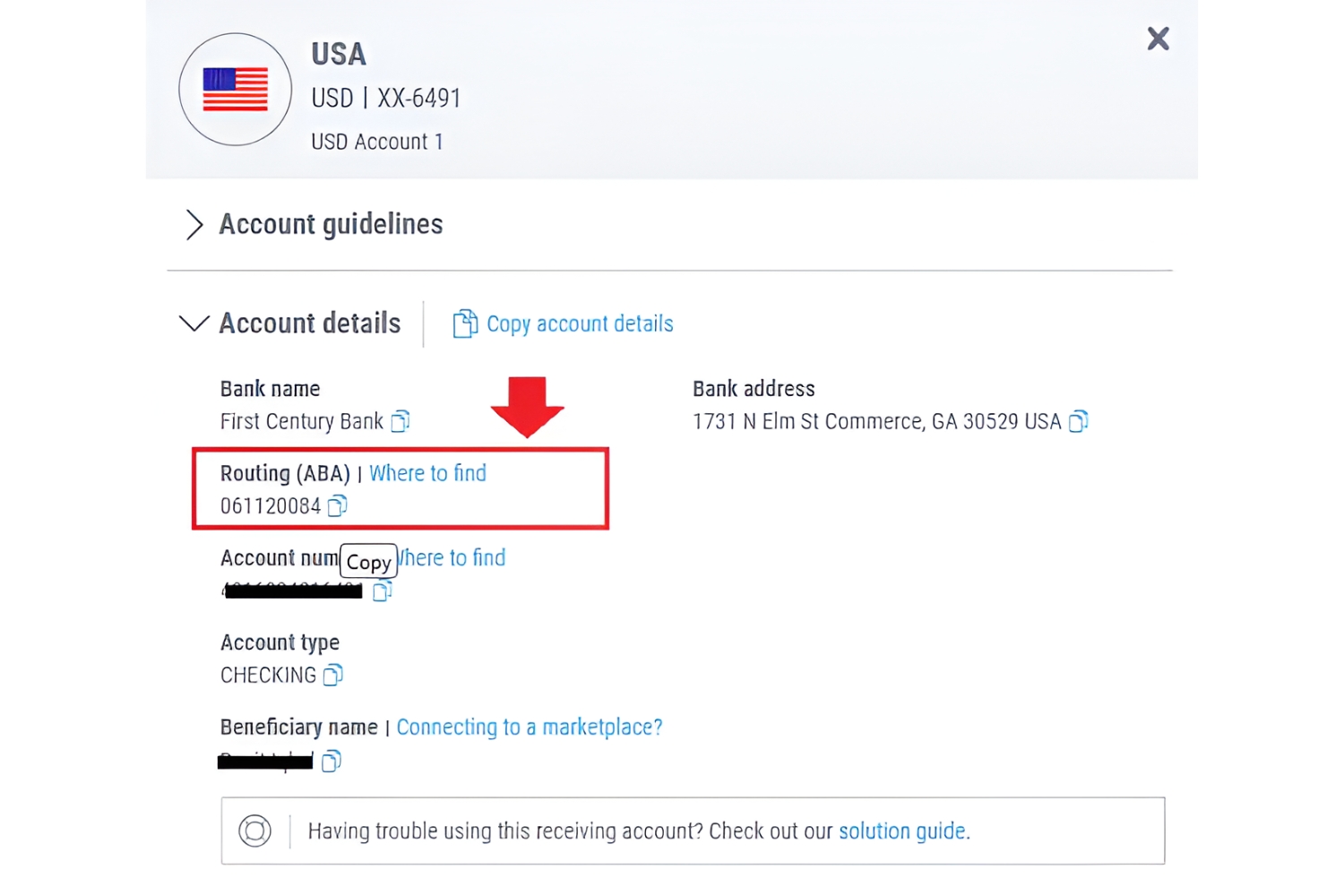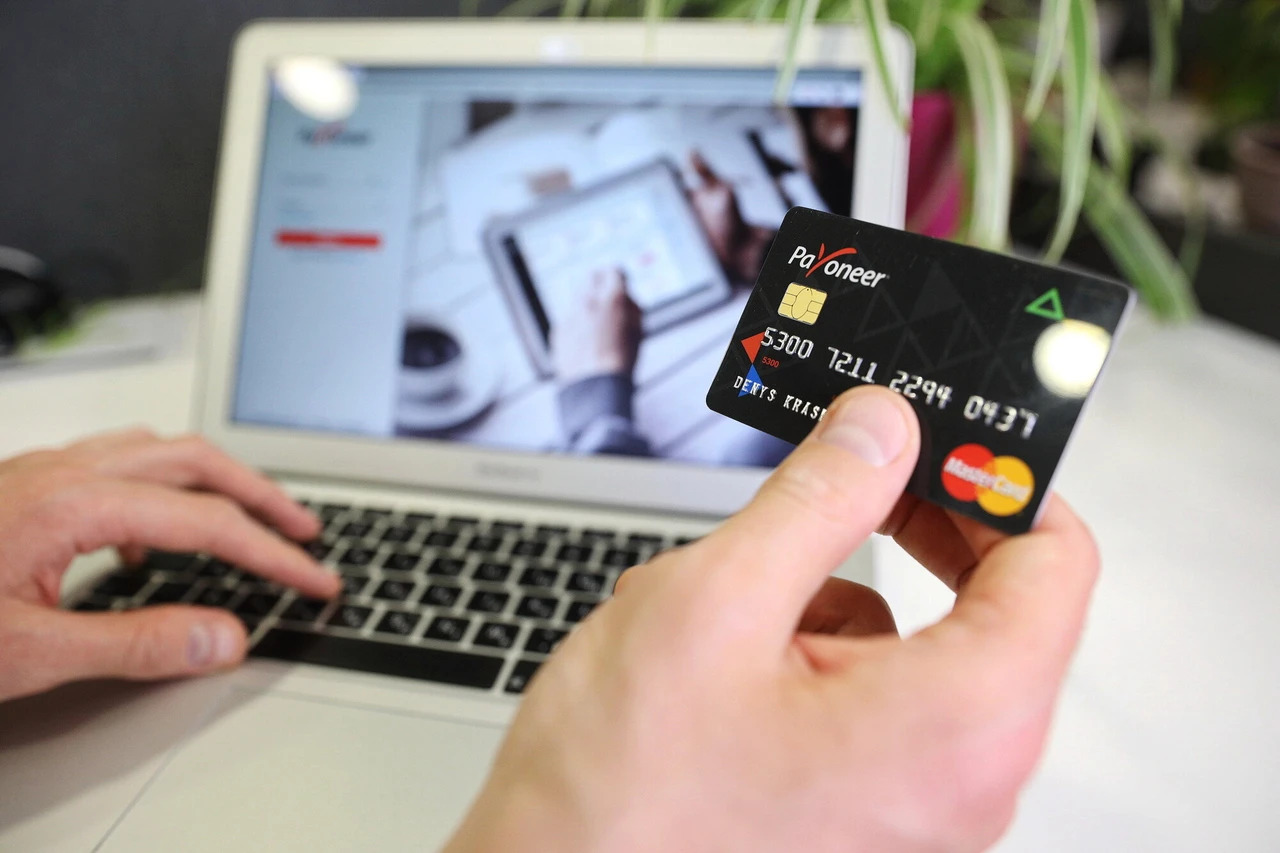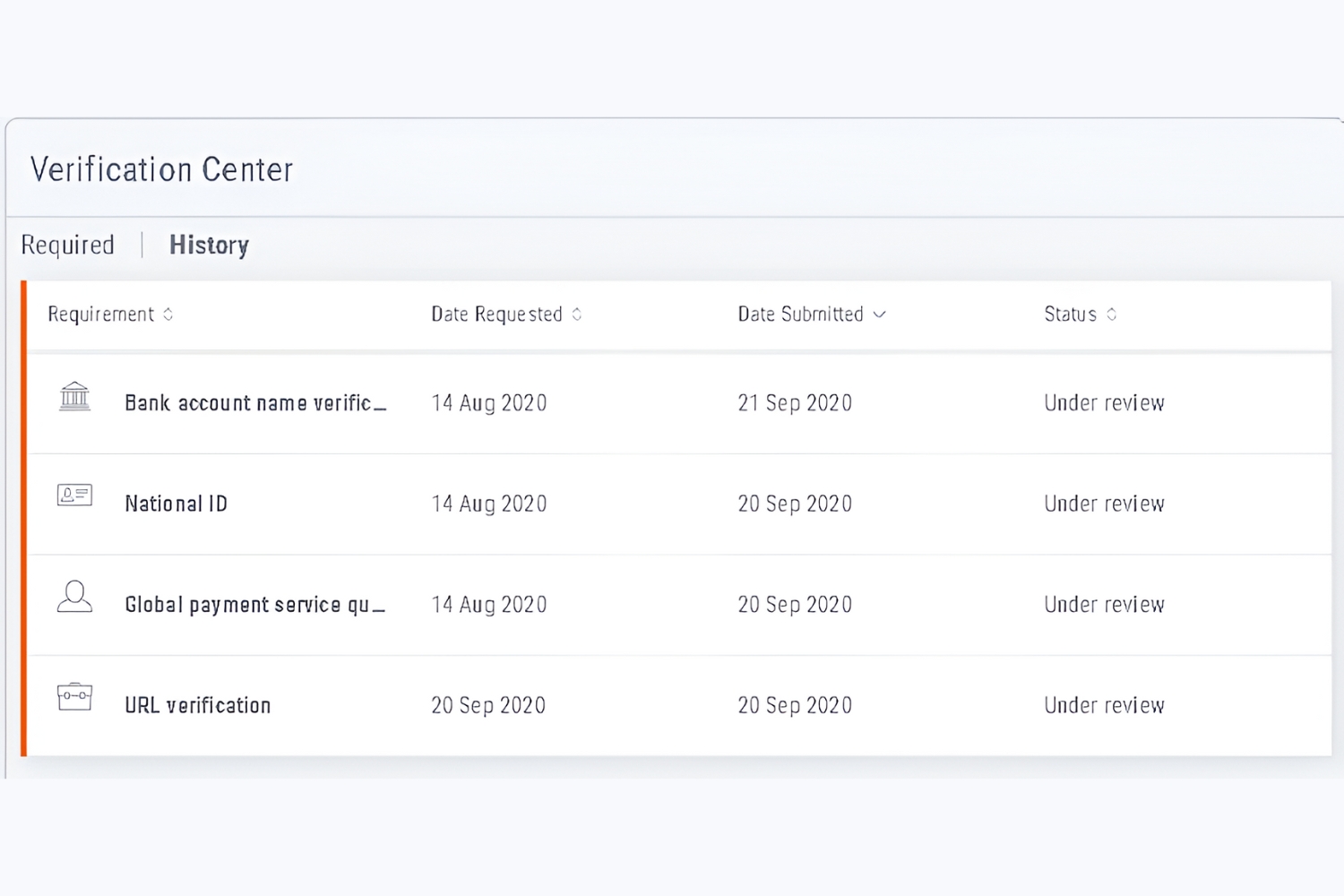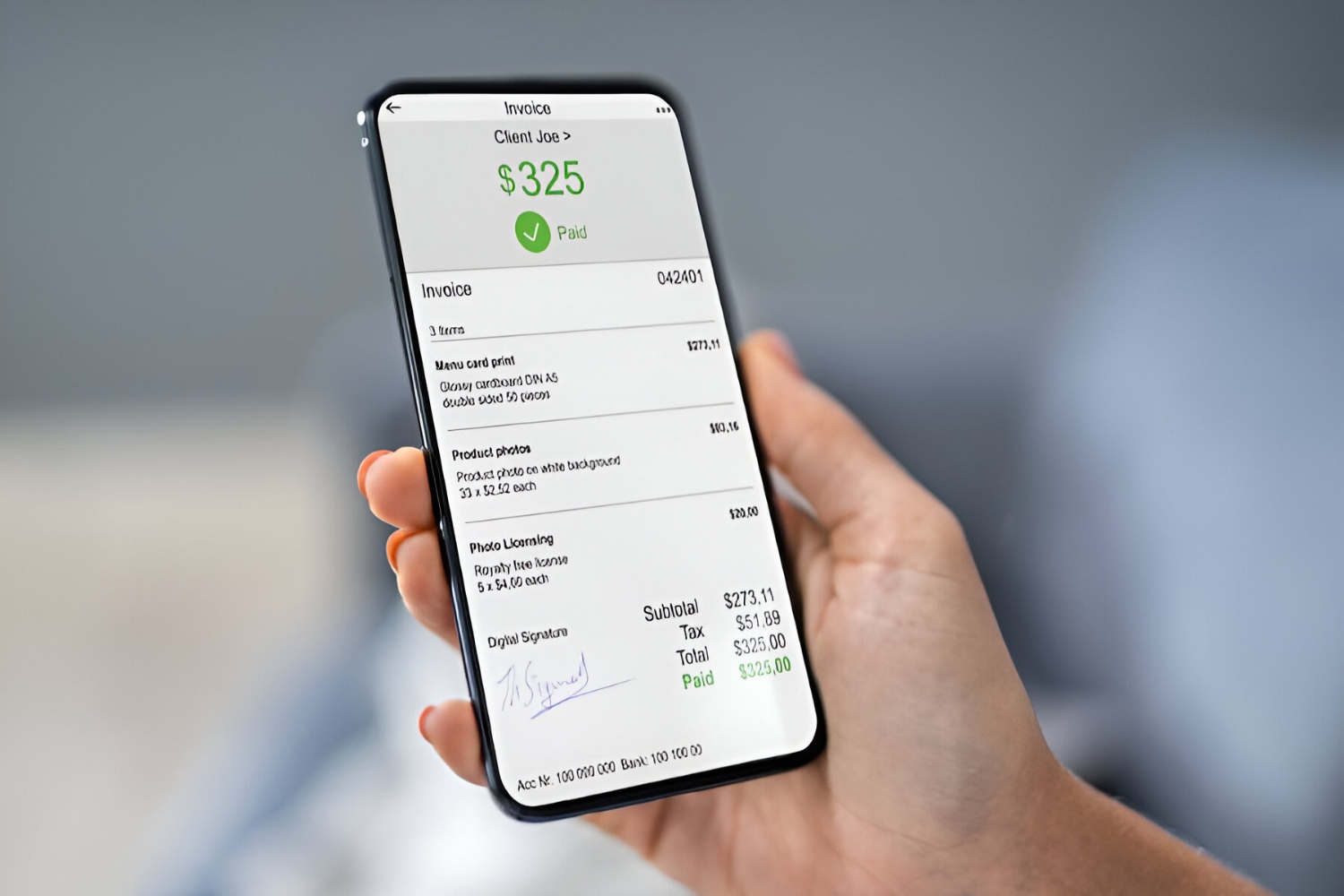Introduction
Welcome to the world of Payoneer, a global payment platform that enables individuals and businesses to send and receive funds securely and conveniently. Whether you’re a freelancer, an online seller, or a business owner, Payoneer offers a range of services to cater to your financial needs.
With the rise of the digital era, traditional payment methods are becoming outdated, slow, and expensive. Payoneer aims to bridge this gap by providing an efficient and cost-effective solution for international transactions. Whether you’re working with clients from different countries or selling products to customers worldwide, Payoneer makes it easier to receive and manage your funds.
In this comprehensive guide, we will delve into the world of Payoneer, exploring how it works, its benefits, and how you can create an account. We’ll also discuss the fees and costs associated with using Payoneer, as well as the various methods available for receiving and withdrawing funds from your Payoneer account.
Additionally, we’ll touch upon Payoneer’s customer support services and the security measures they have in place to protect your financial information. By the end of this article, you’ll have a clear understanding of how Payoneer can revolutionize the way you send and receive payments.
So, whether you’re a freelancer looking for a hassle-free way to get paid for your services or a business owner seeking to streamline your international transactions, buckle up and let’s explore the world of Payoneer.
What is Payoneer?
Payoneer is a global financial platform that provides individuals and businesses with a convenient and secure way to send and receive funds internationally. It serves as an alternative to traditional banking methods and offers a range of services tailored to the needs of freelancers, online sellers, and businesses operating globally.
One of the key features of Payoneer is its ability to facilitate cross-border payments, eliminating the need for complex currency conversions and expensive transaction fees. With Payoneer, users can receive payments in multiple currencies, including USD, EUR, GBP, JPY, and more.
Payoneer also offers users the option to create virtual bank accounts in various countries, making it easier to receive payments from clients or marketplaces located in those regions. This feature is particularly beneficial for freelancers and online sellers who work with clients or sell products in different countries.
Furthermore, Payoneer provides users with prepaid Mastercard® debit cards, which can be linked directly to their Payoneer accounts. These cards can be used for online and offline purchases, as well as ATM withdrawals, making it convenient for users to access their funds wherever and whenever they need them.
Another notable feature of Payoneer is its integration with popular freelance and e-commerce platforms, such as Upwork, Airbnb, and Amazon. This integration allows users to receive payments directly into their Payoneer accounts, eliminating the need for complex payout processes.
Overall, Payoneer is a versatile and user-friendly platform that simplifies the complexities of international payments. Whether you’re a freelancer looking to receive payments from clients worldwide or a business owner selling products globally, Payoneer offers a comprehensive solution to streamline your financial transactions.
How does Payoneer work?
Payoneer operates on a simple yet powerful concept of facilitating seamless international transactions. Here’s a step-by-step breakdown of how Payoneer works:
- Create an Account: To get started with Payoneer, you need to sign up for an account. Visit the Payoneer website and click on the “Sign Up” button. You will be asked to provide your personal details, including your name, email address, and date of birth. Once you submit the information, Payoneer will review your application and, if approved, you will receive an email with further instructions.
- Verify Your Account: After creating an account, you will need to verify your identity. This is an essential step to ensure the security and legitimacy of the platform. Payoneer will ask you to provide proof of identification, such as a government-issued ID or passport, as well as proof of address, like a utility bill or bank statement.
- Receive Payments: Once your account is verified, you can start receiving payments. You will have the option to create virtual bank accounts in different countries, allowing clients or marketplaces to send payments directly to your Payoneer account. You can also add your local bank account details for easy transfers.
- Manage Funds: Payoneer provides a user-friendly dashboard where you can manage your funds. You can view your transaction history, check your account balance, and track incoming and outgoing payments. Payoneer also offers detailed reports and analytics to help you monitor your finances effectively.
- Withdraw Funds: When you’re ready to access your funds, Payoneer offers several withdrawal options. You can transfer the funds to your local bank account, use the Payoneer Mastercard® debit card for ATM withdrawals, or even make online payments directly from your Payoneer account.
- Security Measures: Payoneer prioritizes the security of its users’ funds and personal information. They employ advanced encryption technology to safeguard transactions and data. Additionally, Payoneer implements strict identity verification processes to prevent fraud and unauthorized access to accounts.
With its user-friendly interface, seamless payment processing, and robust security measures, Payoneer offers a convenient and reliable solution for individuals and businesses seeking to manage their international finances.
Benefits of using Payoneer
Payoneer presents numerous advantages for individuals and businesses alike. Here are some key benefits of using Payoneer for your international transactions:
- Global Reach: Payoneer allows you to expand your business and reach customers around the world. With the ability to receive payments in multiple currencies, you can easily cater to clients or customers from different countries without the hassle of currency conversions or high fees.
- Easy Payment Collections: If you’re a freelancer or an online seller, collecting payments can often be a challenge. With Payoneer, the process becomes effortless. You can create virtual bank accounts in multiple countries, making it simple for clients or marketplaces in those regions to send you payments. This eliminates the need for complex international wire transfers.
- Faster Payments: Using traditional bank transfers for international payments can be time-consuming. With Payoneer, you can receive funds faster, reducing the waiting time for your hard-earned money. This is particularly beneficial for freelancers who rely on timely payments for their work.
- Low Fees: Payoneer offers competitive fees compared to traditional banking or international wire transfer fees. You can save money on transaction fees, currency conversions, and receiving payments from different countries. This makes Payoneer a cost-effective solution for international payment processing.
- Convenient Withdrawal Options: Payoneer provides multiple options for withdrawing funds. You can transfer money to your local bank account, use the Payoneer Mastercard® debit card for ATM withdrawals, or make online payments directly from your Payoneer account. This flexibility ensures that you can access your funds in a way that suits your needs.
- Integration with Freelance and E-commerce Platforms: Payoneer seamlessly integrates with popular freelance and e-commerce platforms, simplifying the payment process for freelancers and online sellers. You can receive payments directly into your Payoneer account, eliminating the need to set up separate payment accounts or navigate complex payout processes.
- Excellent Customer Support: Payoneer offers reliable customer support services to assist users with their inquiries and concerns. Their dedicated support team is available via live chat, email, or phone, ensuring that you receive prompt assistance whenever you need it.
- Secure Financial Transactions: Payoneer prioritizes the security of your funds and personal information. They employ robust security measures, including encryption technology, to ensure that your transactions are safe and protected from potential threats.
By utilizing Payoneer for your international transactions, you can enjoy the convenience, cost-effectiveness, and security that it offers. Whether you’re a freelancer, online seller, or business owner, Payoneer empowers you to effortlessly manage your finances and expand your global reach.
How to create a Payoneer account
Creating a Payoneer account is a straightforward process that can be completed in a few simple steps. Follow the instructions below to get started:
- Visit the Payoneer Website: Go to the official Payoneer website and click on the “Sign Up” button located at the top right corner of the homepage.
- Provide Personal Details: Fill out the registration form with your personal information, including your full name, email address, date of birth, and a secure password. Make sure to enter accurate and up-to-date information.
- Verify Your Email Address: After submitting the form, Payoneer will send you an email to the address you provided during registration. Click on the verification link in the email to verify your email address and proceed with the account creation process.
- Provide Required Documents: To verify your identity, Payoneer requires certain documents. These may include a copy of your government-issued ID, such as a passport or driver’s license, as well as proof of your residential address, such as a utility bill or bank statement. Upload these documents through the Payoneer website or mobile app as instructed.
- Wait for Approval: Once you have submitted your personal details and documents, Payoneer will review your application. The review process typically takes a few business days. You will receive an email notification regarding the status of your account application.
- Set Up Your Payment Method: After your account is approved, you can set up your preferred payment method. Payoneer offers multiple options, such as local bank transfer, global payment service, or the Payoneer Mastercard® debit card. Choose the method that suits your needs and follow the prompts to link the respective information.
- Start Transacting: Once your payment method is set up, you can start using your Payoneer account to send and receive payments. You can receive payments from clients or marketplaces around the world, and manage your finances through the user-friendly dashboard provided by Payoneer.
It’s important to note that the account creation process may vary depending on your location and the specific requirements of Payoneer. Make sure to follow the instructions provided by Payoneer during the registration process to ensure a smooth account setup.
By following these steps, you can create your Payoneer account and unlock a world of convenient and secure international transactions.
Payoneer fees and costs
Payoneer offers competitive fees for its services, providing users with a cost-effective solution for their international payment needs. Here is an overview of the fees and costs associated with using Payoneer:
- Account Creation: Creating a Payoneer account is free of charge. There are no upfront fees or subscription costs involved in setting up your account.
- Transaction Fees: Payoneer charges a small fee for each transaction made through the platform. The fees may vary depending on the type and nature of the transaction. For example, receiving payments from clients or marketplaces may incur a certain percentage or fixed fee, while making payments to other Payoneer users may be free of charge.
- Currency Conversion Fees: If you receive payments in a currency different from your account’s default currency, Payoneer will apply a currency conversion fee. The conversion fee is a percentage of the total amount being converted and is typically competitive compared to other financial institutions.
- Withdrawal Fees: Payoneer offers multiple withdrawal options, each with its associated fees. Transferring funds to your local bank account may incur a small fee, which could vary based on your location and the currency being transferred. Using the Payoneer Mastercard® debit card for ATM withdrawals may also have associated fees, such as ATM operator fees.
- Inactivity Fees: Payoneer may charge an inactivity fee if your account remains inactive for an extended period. However, Payoneer usually provides ample notice before applying any such fees, allowing users to avoid them by ensuring account activity.
- Additional Services: Payoneer may offer additional services and features for a fee, such as expedited payment processing, dedicated account managers, or enhanced security measures. These services are optional and can be chosen based on individual requirements.
It’s important to review and understand the fees associated with using Payoneer to ensure transparency and avoid any surprises. Payoneer provides a detailed fee schedule on their website, which outlines the specific costs for various transactions and services.
Keep in mind that the applicable fees may vary based on your location, the specific services you use, and any promotional offers or discounts that may be available.
Overall, Payoneer aims to provide competitive and transparent pricing, allowing users to effectively manage their finances and minimize costs associated with international payments.
How to receive payments with Payoneer
Payoneer offers a variety of convenient options for receiving payments from clients, marketplaces, or individuals globally. Here’s a step-by-step guide on how to receive payments with Payoneer:
- Create a Payoneer Account: If you haven’t already, sign up for a Payoneer account by visiting the official Payoneer website and completing the registration process. Ensure that your account is verified to enable payment transactions.
- Choose Your Payment Method: Payoneer provides multiple payment methods to receive funds. You can select the most suitable method based on your location and needs. Options include receiving payments directly into your Payoneer account, using the Global Payment Service to receive local bank transfers, or linking your Payoneer account with e-commerce platforms or freelance marketplaces that support Payoneer.
- Virtual Bank Accounts: If you choose to use the Global Payment Service, Payoneer allows you to create virtual bank accounts in various countries. When receiving payments, provide your clients or marketplaces with the relevant bank details for the desired currency. This enables them to send payments directly to your Payoneer account without needing to navigate complex international wire transfers.
- Invoice Clients or Provide Payment Details: Depending on the nature of your work, you may need to send invoices to your clients or provide them with your payment details. Include your Payoneer account information or the relevant bank account details provided by Payoneer to ensure seamless payment processing.
- Stay Informed: Payoneer offers real-time updates on incoming payments through email notifications or within your Payoneer account dashboard. You can easily track payment statuses, view transaction details, and ensure that you’re informed about each payment received.
- Manage Your Funds: Once payments are received, you can manage your funds within your Payoneer account. Track your earnings, view your transaction history, and keep an eye on your account balance using the user-friendly Payoneer dashboard. You can also generate detailed reports to gain insights into your financial transactions.
- Withdraw Your Funds: When you’re ready to access your funds, Payoneer provides various withdrawal options. You may transfer funds to your local bank account, use the Payoneer Mastercard® debit card to make purchases or withdraw cash from ATMs, or opt for online payments directly from your Payoneer account.
Payoneer’s diverse range of payment methods and flexibility allows individuals and businesses to conveniently receive payments from clients, marketplaces, or platforms around the world. By following these steps, you can effectively streamline your payment processes and efficiently manage your incoming funds.
How to withdraw funds from your Payoneer account
With Payoneer, withdrawing funds from your account is a simple and straightforward process. Here’s a step-by-step guide on how to withdraw funds from your Payoneer account:
- Access Your Payoneer Account: Log in to your Payoneer account using your username and password. If you don’t already have a Payoneer account, sign up for one and complete the necessary verification process.
- Select Withdrawal Method: Payoneer offers multiple withdrawal options depending on your location and preferences. Some common methods include transferring funds to your local bank account, using the Payoneer Mastercard® debit card for ATM withdrawals, or utilizing online payment options directly from your Payoneer account.
- Bank Transfer: If you choose to transfer funds to your local bank account, click on the “Withdraw” or “Transfer” option in your Payoneer account. Follow the prompts to provide your bank account details, including the bank name, branch address, account number, and any other necessary information. Review the details carefully before submitting the withdrawal request.
- Payoneer Debit Card: If you have a Payoneer Mastercard® debit card, you can use it to make purchases or withdraw cash from ATMs. Ensure that your card is linked to your Payoneer account and has sufficient funds available. Find a nearby ATM that accepts Mastercard® and follow the instructions on the screen for withdrawal using your Payoneer card.
- Online Payments: Payoneer also offers the option to make online payments directly from your account. Look for the “Make a Payment” or “Pay” option within your Payoneer dashboard. Enter the payment details, including the recipient’s information and the amount to be paid. Review the details and confirm the payment to complete the transaction.
- Monitor Transaction Status: After initiating a withdrawal, pay attention to the transaction status within your Payoneer account. You will receive email notifications and updates on the progress of your withdrawal. Depending on the withdrawal method chosen, the processing time may vary.
- Ensure Sufficient Funds: Before attempting to withdraw funds, make sure you have sufficient balance available in your Payoneer account. If necessary, transfer funds from your Payoneer holding accounts to your main account to cover the withdrawal amount.
It’s important to note that withdrawal fees may apply, depending on the chosen withdrawal method and your location. Payoneer provides transparent information about the fees associated with each withdrawal option, allowing you to make informed decisions based on your needs and preferences.
By following these steps, you can easily withdraw funds from your Payoneer account, ensuring quick and convenient access to your earnings.
Payoneer customer support and security measures
Payoneer prioritizes customer satisfaction and security, providing robust customer support and implementing stringent measures to safeguard user information. Here’s what you need to know about Payoneer’s customer support and security measures:
Customer Support:
Payoneer offers reliable customer support services to assist users with their inquiries, concerns, and technical issues. Here are some ways to access Payoneer’s customer support:
- Live Chat: Payoneer provides a live chat feature on their website, allowing users to connect with a support representative in real-time. This is an excellent option for immediate assistance and quick resolution of queries.
- Email Support: Users can also reach out to Payoneer’s support team via email. Simply send an email stating your issue or concern, and the support team will respond within a reasonable timeframe.
- Phone Support: Payoneer offers phone support in multiple languages. Contact numbers can be found on the Payoneer website, along with the availability hours for each region or country.
Payoneer’s customer support team is knowledgeable, professional, and dedicated to providing effective solutions to users’ problems. Whether you have questions about your account, a specific transaction, or need assistance with a technical issue, Payoneer’s support channels are there to help you navigate through any challenges you may encounter.
Security Measures:
Payoneer understands the importance of securing users’ funds and personal information. Here are some security measures implemented by Payoneer:
- Encryption: Payoneer employs industry-standard encryption technology to ensure the security of users’ financial transactions and data. This encryption helps protect sensitive information, making it difficult for unauthorized parties to intercept or access.
- Identity Verification: Payoneer has strict identity verification processes in place to prevent fraud and unauthorized access to accounts. During the account creation process, users are required to provide valid identification documents and proof of address.
- Two-Factor Authentication: Payoneer offers the option for users to enable two-factor authentication (2FA) for added security. This requires users to provide a secondary verification method, such as a unique code sent to their mobile device, in addition to their regular login credentials.
- Fraud Detection: Payoneer employs advanced fraud detection systems to identify and prevent fraudulent activities. This includes monitoring transactions for any suspicious behavior or patterns, flagging potential risks, and taking appropriate actions to protect users’ funds.
- Regulatory Compliance: Payoneer adheres to regulatory standards and complies with stringent anti-money laundering (AML) and Know Your Customer (KYC) regulations. This ensures that Payoneer operates within the legal framework and enhances the security of financial transactions.
By implementing strong security measures and providing reliable customer support, Payoneer aims to instill trust and confidence in its users. The combination of these measures ensures that your transactions are safe, your personal information is protected, and you have the support you need to address any concerns.
Conclusion
Payoneer is a global financial platform that offers individuals and businesses a seamless and secure way to send and receive funds internationally. With its extensive range of services, Payoneer revolutionizes the way we conduct cross-border transactions, making it easier, faster, and more cost-effective.
Throughout this guide, we have explored the various aspects of Payoneer, including what it is, how it works, and the benefits it offers. We’ve discussed the steps involved in creating a Payoneer account and how to receive and withdraw funds. Additionally, we’ve highlighted the importance of Payoneer’s customer support and the stringent security measures implemented to safeguard user information.
By using Payoneer, individuals can expand their business globally, reach new markets, and efficiently receive payments from clients or marketplaces around the world. Freelancers can enjoy faster and secure payments, eliminating payment processing hurdles. Businesses can streamline their international transactions and optimize their financial processes.
Overall, Payoneer provides a robust and user-friendly platform that simplifies the complexities of international payments. With its competitive fees, extensive withdrawal options, and excellent customer support, Payoneer empowers individuals and businesses to manage their finances with ease.
Whether you’re a freelancer, an online seller, or a business owner, Payoneer offers a comprehensive solution to meet your financial needs. Sign up for a Payoneer account today and unlock the possibilities of smooth and efficient international transactions.







